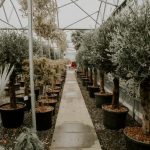Landscaping ideas for large gardens offer a canvas of endless possibilities to create stunning outdoor spaces. From expansive lawns to hidden nooks, large gardens provide ample room to experiment with various design elements and features. Whether you’re looking to enhance the natural beauty of your garden or transform it into a functional outdoor living space, strategic planning and design are essential.
Before diving into the world of landscaping for large gardens, it is crucial to assess the space accurately. Understanding the layout, size, and potential challenges of your garden will help in planning effectively and utilizing every inch of space creatively. By taking stock of existing features, sunlight patterns, and potential focal points, you can envision a cohesive design that complements the natural landscape.
One key aspect of landscaping in large gardens is creating impactful focal points that draw the eye and add visual interest. From water features like ponds or fountains to sculptures, seating areas, or even fire pits, these elements can elevate the overall look and feel of your garden. By strategically placing these focal points throughout the space, you can create zones that invite exploration and relaxation amidst nature’s beauty.
Assessing the Space
When it comes to landscaping ideas for large gardens, one of the first steps is to assess the space you have available. Understanding the layout and size of your garden is essential in planning an effective and cohesive design. By taking stock of the different areas in your garden, you can determine how to best utilize the space to create a harmonious outdoor environment.
To assess your garden effectively, start by mapping out the different zones within your yard. This can include areas such as open lawns, flower beds, vegetable patches, or even existing structures like patios or decks. Once you have a clear idea of the layout, consider factors such as sun exposure, soil quality, and any existing features that you want to highlight or work around.
One effective way to plan effectively for a large garden is by creating a list of priorities. Determine what elements are most important to you – whether it’s a relaxing seating area, a vibrant flower garden, or a functional vegetable patch.
By establishing your priorities upfront, you can focus on incorporating them into your overall landscape design. Additionally, consider any special interests or hobbies that you may want to incorporate into your garden, such as bird watching areas or meditation spaces.
Designing Focal Points
Water Features
One popular way to create a focal point in a large garden is by adding a water feature. Whether it’s a tranquil fountain, cascading waterfall, or serene pond, water features can add a sense of serenity and relaxation to your outdoor space. Consider placing your water feature in a central location where it can be easily seen and enjoyed from different areas of the garden.
Sculptures
Another impactful focal point for large gardens is the addition of sculptures. When choosing sculptures for your garden, opt for pieces that complement the overall style and theme of your outdoor space. Sculptures can add drama, whimsy, or elegance to the landscape, depending on the design you select. Placing sculptures strategically throughout the garden can draw the eye and create visual interest.
Seating Areas
Incorporating seating areas into your large garden design not only provides practical functionality but also serves as a focal point for gathering and relaxation. Whether it’s a cozy bench nestled among lush vegetation, a spacious patio with comfortable seating options, or a secluded nook surrounded by fragrant flowers, creating inviting seating areas encourages people to linger and enjoy the beauty of the garden.
Choose durable materials that can withstand outdoor elements and place seating strategically in areas with scenic views or near other focal points in the landscape.
Utilizing Vertical Space
Large gardens offer ample opportunities for creative landscaping ideas, especially when it comes to maximizing space. One effective strategy is to utilize vertical space by incorporating trellises, arbors, and vertical gardens. These features not only add visual interest but also help make the most of the available area in a garden.
Tantalizing Trellises
Trellises are versatile structures that can serve multiple purposes in a large garden. They can be used as decorative elements to add height and structure to the landscape. Additionally, trellises provide support for climbing plants such as vines, roses, or ivy, creating a lush green backdrop in the garden. Consider placing trellises strategically along fences or walls to create privacy screens or designate different areas within the garden.
Artistic Arbors
Arbors are another great way to enhance the vertical dimension of a large garden while adding architectural interest. These structures can act as gateways to different sections of the garden or mark transitions from one area to another. Arbors can also be adorned with climbing plants, flowering vines, or hanging baskets to create a whimsical and inviting atmosphere in the garden. Choose designs that complement the overall style of your landscape for a cohesive look.
Vertical Gardens
Vertical gardens are an innovative way to introduce greenery into a large garden without taking up valuable ground space. These living walls can be created using various techniques such as mounting containers on walls or constructing modular systems with built-in irrigation. Vertical gardens allow for growing herbs, vegetables, succulents, or colorful flowers in a compact and visually striking manner.
They not only add beauty but also help improve air quality and provide insulation for buildings. Incorporating trellises, arbors, and vertical gardens into your landscaping design for large gardens will not only maximize space but also add depth and dimension to your outdoor oasis.
Plant Selection
Planting the right mix of trees, shrubs, and flowers is essential when it comes to creating a stunning landscape in large gardens. The key is to select a variety of plants that will complement each other while also thriving in the unique conditions of your garden. In large gardens, you have the opportunity to experiment with different sizes, colors, and textures to create a visually appealing and harmonious space.
When choosing trees for a large garden, consider both deciduous and evergreen varieties to provide year-round interest. Deciduous trees offer vibrant foliage during the fall season, while evergreens maintain their color throughout the year. Planting a mix of tall canopy trees and smaller ornamental trees can add depth and dimension to your garden. Additionally, consider flowering trees for bursts of color and fragrance.
Incorporating a variety of shrubs into your landscape design can help define spaces, create privacy, and add structure. Choose shrubs with interesting foliage or colorful blooms to create focal points within the garden. For large gardens, groupings of shrubs can be used to break up expanses of lawn or add visual interest along pathways. Consider using native shrub species that are well-suited to your climate for easier maintenance and long-term health.
Flowers play a vital role in adding pops of color and attracting pollinators to your garden. When selecting flowers for a large garden, think about bloom times to ensure there is always something in blossom throughout the growing season.
Mix annuals and perennials for continuous color, and consider planting flower beds in different shapes and patterns to create visual appeal from various vantage points around the garden. By carefully selecting plants that thrive in your specific climate and soil conditions, you can create a beautiful landscape that will flourish for years to come.
| Plant Type | Considerations |
|---|---|
| Trees | Deciduous vs Evergreen; Canopy vs Ornamental; Flowering varieties |
| Shrubs | Define spaces; Native species; Foliage vs Bloom-based |
| Flowers | Bloom times; Annuals vs Perennials; Colors & patterns in planting beds |
Outdoor Living Spaces
When it comes to landscaping ideas for large gardens, creating inviting outdoor living spaces is a key component. Incorporating features like outdoor kitchens, dining areas, and lounging spaces can transform your expansive garden into a functional and enjoyable area for relaxation and entertainment. Here are some ideas on how to design these outdoor living spaces to make the most of your large garden:
- Outdoor Kitchen: Consider installing a fully equipped outdoor kitchen with a grill, countertops, sink, and storage cabinets. This setup allows you to prepare meals while enjoying the fresh air and beautiful surroundings of your garden.
- Dining Area: Create a cozy dining space with a large table and comfortable chairs where you can host gatherings or enjoy meals alfresco. Consider adding pergolas or umbrellas for shade and privacy.
- Lounging Space: Design a relaxing lounge area with comfortable seating options such as outdoor sofas, lounge chairs, or hammocks. Add decorative elements like outdoor rugs, throw pillows, and side tables to enhance the comfort and style of the space.
By incorporating these outdoor living spaces into your landscaping design for large gardens, you can truly make the most of your outdoor space and create an inviting environment for both relaxation and entertainment. Whether you enjoy hosting barbecues with friends, having family dinners under the stars, or simply unwinding in a tranquil setting, designing functional and aesthetically pleasing outdoor living spaces can elevate the overall look and feel of your garden.
Pathways and Walkways
Designing pathways in large gardens is not just about functionality; it also plays a significant role in enhancing the overall aesthetic appeal of the landscape. When planning pathways and walkways, it is crucial to consider both practical aspects and design elements. One popular landscaping idea for large gardens is to create meandering paths that lead visitors through different areas of the garden, allowing them to explore and appreciate its beauty at every turn.
Incorporating natural materials such as flagstone, gravel, or wood into the pathway design can blend seamlessly with the surrounding greenery and add a rustic charm to the garden. These materials not only provide visual interest but also create a harmonious connection between the pathways and the rest of the landscape. Additionally, adding strategic lighting along the pathways can illuminate the way at night, creating a magical ambiance and making nighttime strolls in the garden a delightful experience.
Another creative approach to designing pathways in large gardens is to incorporate different textures and shapes. Mixing materials like stepping stones, pavers, or mulch can add variety and visual appeal to the overall layout.
By playing with patterns and arrangements, you can create unique designs that reflect your personal style while complementing the existing features of your garden. Ultimately, well-designed pathways are essential for navigating through large gardens while also serving as key design elements that tie everything together seamlessly.
| Landscaping Ideas | Large Gardens |
|---|---|
| Meandering paths | Rustic charm |
| Natural materials | Harmonious connection |
| Strategic lighting | Magical ambiance |
Lighting and Accessories
When it comes to landscaping ideas for large gardens, lighting and accessories play a crucial role in enhancing the overall aesthetic and functionality of the outdoor space. Outdoor lighting not only adds an element of safety and security but also creates a magical ambiance during evening gatherings or late-night strolls.
To illuminate your expansive garden effectively, consider a combination of overhead lights, pathway lights, spotlights for focal points, and decorative lanterns or string lights for a cozy atmosphere. Additionally, solar-powered lights are eco-friendly options that can be strategically placed throughout the garden without the need for electrical wiring.
In addition to outdoor lighting, incorporating decor and furniture accents can elevate the style and comfort of your large garden. Choose decor elements such as sculptures, birdbaths, wind chimes, or outdoor artwork to add personality and visual interest to different areas of your garden.
For seating areas or dining spaces, opt for weather-resistant furniture that complements the overall theme of your landscape design. From sleek modern sofas to rustic wooden benches, the right furniture pieces can create inviting outdoor living spaces where you can relax and entertain guests.
When selecting accessories for your large garden, consider elements like water features such as fountains or ponds, fire pits for cozy gatherings on cool evenings, or even outdoor rugs and throw pillows to add warmth and color to patio areas. By paying attention to both lighting and accessories in your landscaping plans for a large garden, you can create a well-balanced outdoor oasis that is both visually appealing and functional all year round.
Maintenance Tips
In conclusion, landscaping a large garden offers a canvas of endless possibilities to create a stunning outdoor space that reflects your personality and style. By assessing the space, designing focal points, utilizing vertical elements, selecting the right plants, incorporating outdoor living areas, creating pathways, and adding lighting and accessories, you can transform your garden into a beautiful oasis that is both functional and visually appealing.
One crucial aspect of maintaining a large garden landscape is regular upkeep and care. Proper maintenance ensures that your garden remains healthy, vibrant, and continues to thrive for years to come. This includes watering plants as needed, pruning trees and shrubs, fertilizing the soil, mulching to retain moisture, weeding regularly, and keeping an eye out for pests or diseases that may affect your plants.
Additionally, consider seeking professional help if needed for specialized tasks like tree trimming or lawn care. By dedicating time and effort into maintaining your large garden landscape properly, you can enjoy the fruits of your labor while relaxing in a serene outdoor retreat that truly enhances your property. Implementing these landscaping ideas for large gardens will not only add value to your home but also create a soothing sanctuary where you can unwind and reconnect with nature.
Frequently Asked Questions
What Is the Best Layout for a Large Garden?
The best layout for a large garden depends on factors such as personal preferences, the overall style of the property, and the purpose of the garden. Utilizing design principles like balance, proportion, and focal points can help create a cohesive and visually appealing space.
How Do You Landscape a Large Yard on a Budget?
Landscaping a large yard on a budget involves strategic planning and prioritizing key elements. DIY projects, reusing materials, opting for native plants that require less maintenance, and focusing on high-impact areas are all cost-effective ways to enhance the landscape without breaking the bank.
How Do You Layout a Large Yard?
When laying out a large yard, it’s essential to consider both functionality and aesthetics. Dividing the space into zones based on different uses (e.g., dining area, entertainment area, play area) helps organize the yard effectively.
Incorporating paths or walkways to connect these zones can enhance flow and accessibility. Additionally, maintaining open spaces and incorporating greenery can create a balanced layout that promotes relaxation and enjoyment.

Welcome to my gardening blog! I am passionate about plants and enjoy sharing my knowledge and experiences with others. In this blog, I will write about everything related to gardening, from tips on how to get started to updates on my own garden projects.





